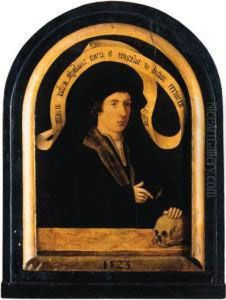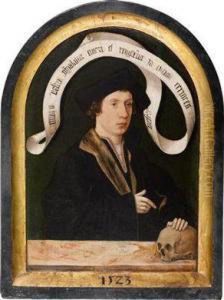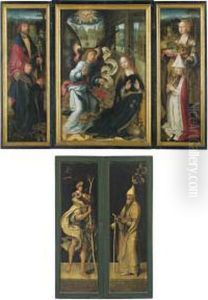Jacob Claessens Van Utrecht Paintings
Jacob Claessens van Utrecht, also known as Jacob van Utrecht or Jacob Claesz van Utrecht, was a Northern Renaissance painter from the Low Countries, specifically from the city of Utrecht in what is now the Netherlands. His exact birth and death dates are not firmly established, but he is believed to have been born around 1480 and to have died roughly around 1530.
Jacob van Utrecht was primarily active during the first three decades of the 16th century. He is known for his detailed portrait work and religious compositions, which showcase the influence of Early Netherlandish painting. His style is marked by a strong sense of realism and attention to detail, particularly in the representation of textures and fabrics, which was a hallmark of Netherlandish art of that period.
Not much is known about van Utrecht’s early life or training. It is thought that he might have been a pupil of the Master of the Legend of Saint Ursula in Cologne, as his style is closely related to that of the Cologne painters of the time. Later in his career, van Utrecht appears to have been quite mobile. Records indicate that he was in Lübeck, Germany, in 1507, where he painted an altarpiece for the local cathedral, a work that is considered one of his masterpieces.
Van Utrecht’s work was greatly admired during his lifetime, and he received commissions from various patrons, including members of the nobility and religious institutions. Among his notable works are the 'Triptych of the Crucifixion', painted for the church of St. John in Lübeck, and a portrait of the Hamburg merchant Hinrik Bornhofen.
The artist's last documented work dates to 1529, and he is thought to have died around 1530. Despite his apparent success and the quality of his work, Jacob van Utrecht did not leave a large body of work, or at least not many pieces have been definitively attributed to him. His contributions to Northern Renaissance art are, however, significant for their blend of local tradition with influences from Italian Renaissance, which were becoming more prevalent at the time among artists of the Low Countries. His legacy is also seen in the way he captured the burgeoning spirit of individualism through his portraiture, a key element of Renaissance humanism.


